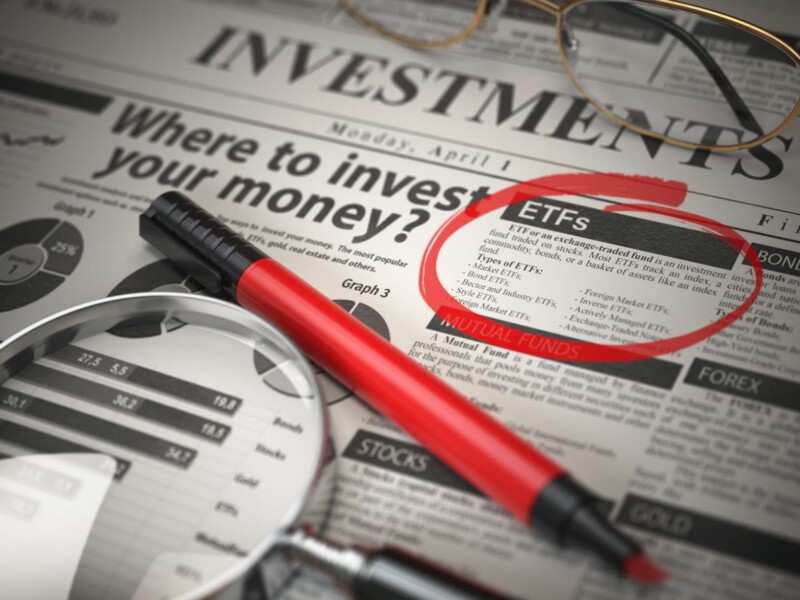
Embarking on the investment journey with limited capital can be challenging, yet numerous affordable assets could align with financial objectives while mitigating risk. Investing doesn’t necessarily demand significant funds; a strategic approach toward assets with potential for growth, such as stocks, can pave the way toward building wealth.
Affordable stocks offer an entry point into the equity market, allowing investors to gain exposure to company growth and potential dividends.
However, the search for inexpensive investment options shouldn’t sideline the importance of diversification. Bonds, for instance, can balance a portfolio with steady income and reduced volatility, though their interest rates and market value can be affected by economic changes.
Meanwhile, Certificates of Deposit (CDs) and high-yield savings accounts offer safer avenues, as they provide a fixed interest over time. While these returns might be more modest than those from stocks or bonds, they serve as a solid foundation for an investment portfolio due to their lower risk profile.
Careful research and due diligence are vital when considering assets to purchase. Liquidity, or the ease with which an asset can be converted to cash, varies across asset types and should be weighed against investment goals.
Discovering low-cost assets that align with both financial targets and the investor’s risk tolerance is essential. Although building wealth usually takes time and patience, investing diligently, even in small, affordable assets, can contribute to financial growth and stability over the long term.

Investors should consider growth potential and associated risks when exploring investment opportunities within cryptocurrencies. Certain digital assets, known for their affordability, have shown promise in recent months.
Bitcoin Minetrix (BTCMTX): Known as a stake-to-mine project, this asset offers a unique approach to crypto mining. With a significant presale collection, it exemplifies a high Annual Percentage Yield (APY) of over 90%. However, like all cryptocurrencies, it carries the risk of market volatility.
Sponge V2 (SPONGEV2): As an update to its predecessor, Sponge V2 provides utility in the Play-to-Earn space and yields up to 246% in APYs.
Including cryptocurrencies can diversify portfolios, offsetting risks related to more traditional assets like certificates of deposit (CDs) or the stock market. They offer greater liquidity than certain other assets, and some platforms allow for commission-free trades, reducing the cost of entry.
When setting up a brokerage account, one must be cognizant of the potential need for a specialized crypto exchange or wallet, adding layers to investment management.
Meme Kombat (MK): This AI-driven Play-to-Earn game indicates the intersection of machine learning with cryptocurrency, appealing to both tech enthusiasts and gamers.
It is crucial to conduct thorough research or consult with a financial advisor, as the cryptocurrency market is notorious for its volatility, where swift changes are commonplace.

Mutual funds offer investors a way to diversify their portfolios by pooling money to purchase a variety of assets. This investment vehicle provides access to a broader range of securities than an individual might be able to buy on their own.
A mutual fund is managed by professional fund managers who allocate the fund’s capital, aiming to produce capital gains and income for the fund’s investors.
Types of Mutual Funds:
Advantages:
Risks:
Investment Consideration:
For those interested in income-producing assets, dividend stocks within mutual funds can offer regular income. Alternatively, fixed-income funds might include assets like certificates of deposit (CDs) or high-yield savings accounts. While these don’t typically offer high growth, they can stabilize a diverse portfolio.
Portfolio construction should balance risk and potential growth, using assets like index funds to increase exposure to market gains, while fixed-income securities can cushion against market volatility. Due diligence and consideration of investment goals are crucial in selecting the appropriate mutual fund.
See Related: Best Passive Income Ideas to Start Today

Exchange-traded funds (ETFs) have gained popularity for investors looking to diversify their portfolios. An ETF is a collection of securities—such as stocks—that often tracks an underlying index. They are traded on exchanges similar to stocks, making them highly liquid assets.
Diversification is a cornerstone of ETF investing. By holding a basket of various assets, ETFs allow for a broad market exposure, which can lower the risk compared to investing in single stocks. They are suitable for multiple financial goals, including savings account augmentation and retirement income planning.
ETFs come in various forms, providing access to a wide range of sectors, commodities, and investment strategies. Some focus on income-producing assets, such as dividend stocks, which deliver regular income through dividends.
Others invest in a mix of equities and certificates of deposit (CDs), aiming to balance growth and income generation.
| Type of ETF | Potential Growth | Risks |
|---|---|---|
| Stock ETFs | High | Market volatility |
| Bond ETFs | Moderate | Interest rate changes |
| Commodity ETFs | High | Market and geopolitical risks |
While ETFs often have lower fees than managed funds, conducting research when selecting an ETF is vital, as expenses and performance vary significantly. Moreover, the role of assets with a low correlation to the stock market should be considered, as they may offer stability during market fluctuations.
Investors seeking to generate income or grow their wealth may find ETFs an adaptable component in their investment strategy. Nonetheless, like all investments, ETFs come with their own set of risks.
Market volatility can affect performance, and tracking errors might lead to discrepancies compared to the benchmark index. Proper due diligence before investing can help align ETF choices with an individual’s risk tolerance and financial objectives.

Investing in foreign currencies can be a strategic way to diversify your investment portfolio. Given foreign currencies’ different economic cycles, they may hedge against inflation or offer growth opportunities when other asset classes are underperforming.
Spot Trading
Forward Trading
CDs and Savings Accounts
Exchange-Traded Funds (ETFs)
Investing in foreign currencies comes with inherent risks, including political instability, varying levels of liquidity, and the impact of global economic events. Thorough research and a clear understanding of the foreign exchange market are crucial before committing funds.
Investors should consider their investment objectives and the risks involved, as this asset class is unsuitable for everyone.

When considering cheap assets to buy, commodities offer a tangible option that can bring diversity to an investment portfolio. These assets are fundamental goods used in commerce that are interchangeable with other commodities of the same type, which include oil, gold, and base metals.
Gold: Often seen as a ‘safe-haven’ asset, gold can stabilize an investment portfolio, especially during economic uncertainty. It can be invested through individual stocks, ETFs, mutual funds, or purchasing physical gold. But, prices are subject to market demand and currency values.
Base Metals: These include materials like copper, aluminum, and zinc, which are crucial for various industries. They can signal economic health, with potential for growth as demand in sectors like construction or technology increases. Yet they may also be prone to price swings tied to industrial demand and supply disruptions.
Investors looking to include commodities should thoroughly research and possibly diversify across different commodity sectors to mitigate risks.
Unlike certificates of deposit (CDs), commodities do not offer fixed returns or FDIC insurance, making them riskier but with the potential for higher returns. Assessing personal risk tolerance and market trends is essential before investing in commodities.
See Related: How to Make Money at School

Real Estate Investment Trusts (REITs) offer an accessible way to invest in a diversified portfolio of income-producing real estate assets. By purchasing shares in a REIT, investors gain exposure to real estate markets without owning physical properties.
REITs are designed to generate income primarily through rent from their property holdings, which can include office buildings, apartments, shopping centers, and even healthcare facilities. The income is then distributed to shareholders in the form of dividends, presenting an attractive option for those seeking regular cash flow.
Diversification is another advantage. Instead of relying on a single property, REITs spread risk across multiple assets. This diversification can potentially smooth out the volatility of investment returns since the performance of individual properties is less likely to impact the entire portfolio.
However, risks do exist. Market conditions affect occupancies and rental rates, bearing directly on the REIT’s performance. Moreover, since REITs are traded on stock exchanges, their share prices can be affected by overall market sentiment, causing value fluctuations independently of underlying real estate assets.
Investors also explore real estate crowdfunding platforms, a contemporary twist to traditional REITs. These platforms allow for investment in specific real estate projects or a curated portfolio, often with lower initial investment requirements than traditional real estate purchases.
Here’s a quick comparison:
| Aspect | REITs | Real Estate Crowdfunding |
|---|---|---|
| Ownership | Share in a company that owns properties | Direct in specific projects or portfolios |
| Investment Minimum | Varies, generally lower than direct real estate | Can be low; varies by platform |
| Income Potential | Dividends from profit rental income | Rental income, potential for appreciation |
| Liquidity | Generally high (publicly traded) | Lower, often with longer holding periods |
Investing in REITs can complement high- and low-maintenance business models, providing a means to invest in the real estate market with less hands-on management than traditional rental properties or short-term rentals.
With a well-considered approach, REITs can be a valuable addition to investment portfolios, although investors should carefully weigh the growth potential against the inherent risks.
Investing in art can be an intriguing option for those seeking to diversify their investment portfolio. Unlike stocks and bonds, art is a creative asset that can appreciate value and contribute to building one’s wealth. But, it’s crucial to approach art investment with a clear understanding of its unique market.
Pros:
Cons:
Key Considerations:
As an investor, understanding asset-specific risks and the ability to maintain wealth through creative assets such as art is crucial. Although not without complexities, art investment can add depth and cultural value to one’s investment strategy.
Last updated: March 14, 2024